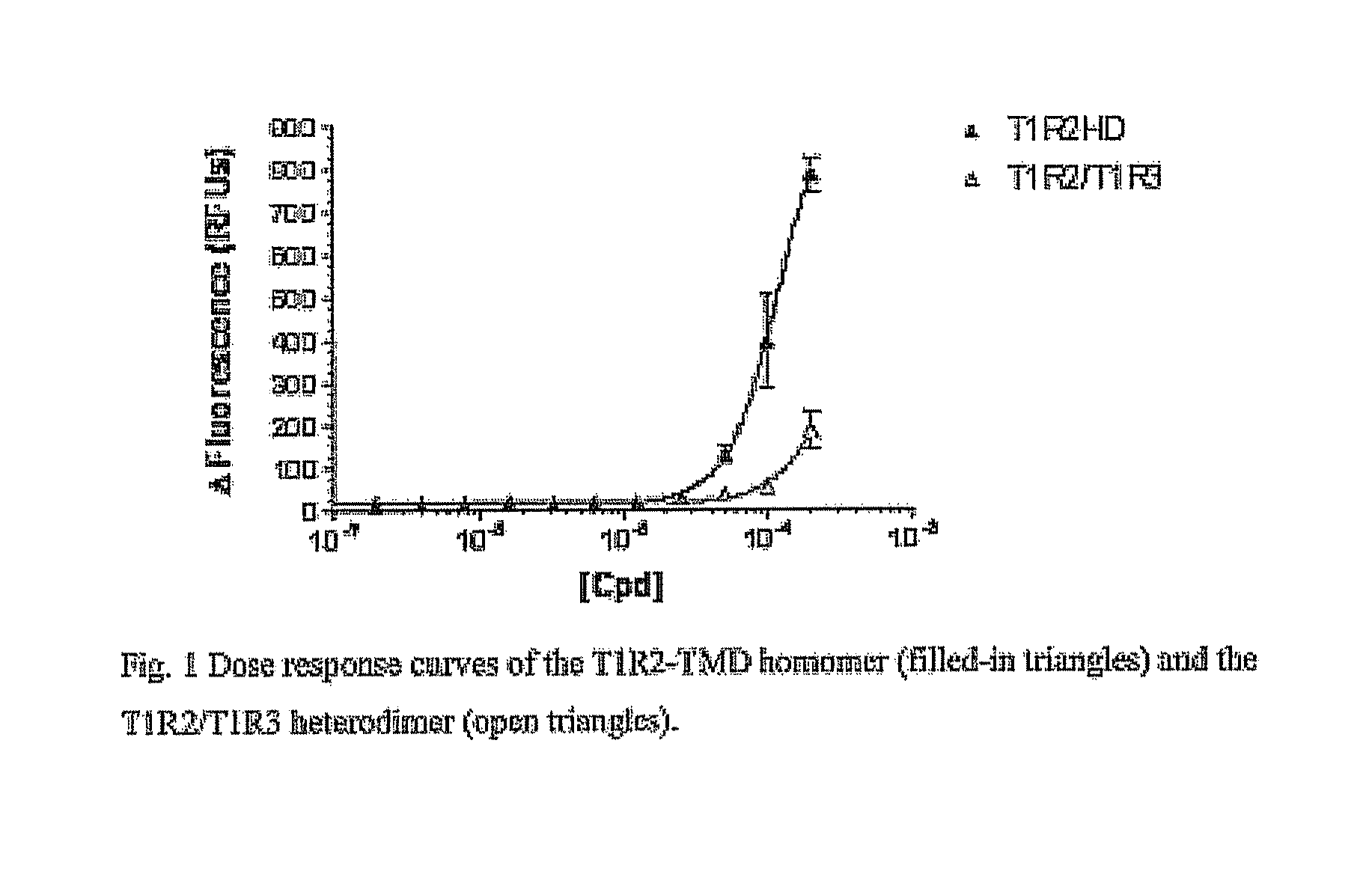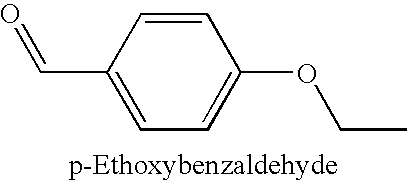Methods of screening for sweet taste modulators
a modulator and sweet taste technology, applied in the field of identification of agents, can solve the problems of not being able to screen specific modulators, excluding vft ligands, and t1r2/t1r3 receptors, and not being able to use known screening methods
- Summary
- Abstract
- Description
- Claims
- Application Information
AI Technical Summary
Problems solved by technology
Method used
Image
Examples
examples
[0253]An overview of the examples is given below.[0254]Example 1 describes a general method for measuring taste receptor activity.[0255]Examples 2-5 describe the preparation of the different T1R vector constructs.[0256]Examples 6-8 describe the transfection of cells with the constructs.[0257]Examples 9-12 describe the identification, without limitation, of a variety of sweetness enhancers.[0258]Example 13 describes a general method of measuring sweetness.[0259]Examples 14-20 describe control experiments measuring sweetness of an enhancer in the absence of another sweet tastant.[0260]Examples 21-29 relate to mixtures of sweetness enhancers with sweet tastants.[0261]Examples 30-33 describe control experiments measuring sweetness of an enhancer in the absence of another sweet tastant.[0262]Example 34-36 shows admixtures of two or more sweetness enhancers together with a sweet tastant.
[0263]1. Fluo-4 Calcium Assay
[0264]Fluo-4 is a fluorescent indicator for intracellular calcium and allo...
PUM
| Property | Measurement | Unit |
|---|---|---|
| pH | aaaaa | aaaaa |
| pH | aaaaa | aaaaa |
| pH | aaaaa | aaaaa |
Abstract
Description
Claims
Application Information
 Login to View More
Login to View More - R&D
- Intellectual Property
- Life Sciences
- Materials
- Tech Scout
- Unparalleled Data Quality
- Higher Quality Content
- 60% Fewer Hallucinations
Browse by: Latest US Patents, China's latest patents, Technical Efficacy Thesaurus, Application Domain, Technology Topic, Popular Technical Reports.
© 2025 PatSnap. All rights reserved.Legal|Privacy policy|Modern Slavery Act Transparency Statement|Sitemap|About US| Contact US: help@patsnap.com



